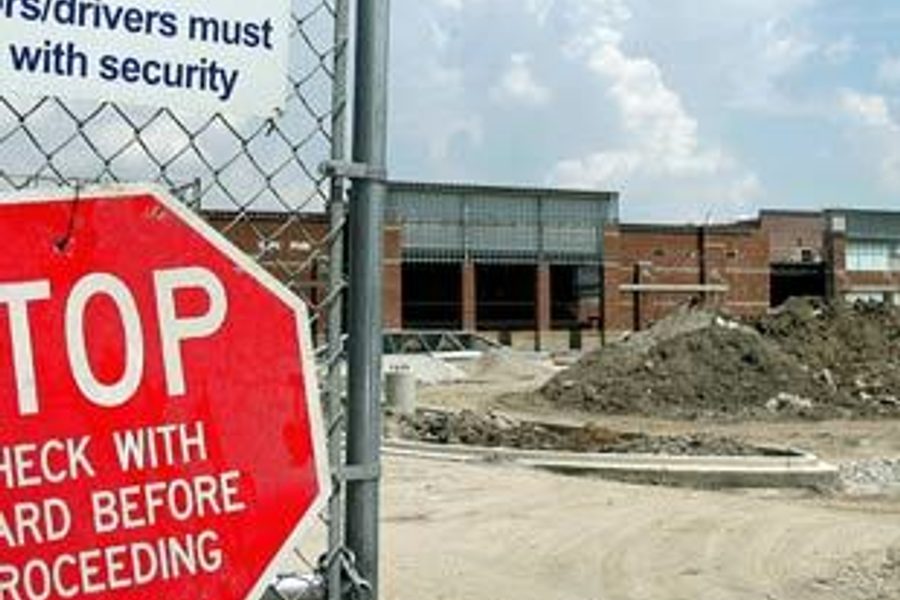Bigger Salaries for Big Box Workers?
Will Chicago Pass a Big Box Ordinance to raise worker wages?
Adam Doster

Like many people, Pecola Doggett, 56, spent her early working years adjusting to the burgeoning service-sector economy. Whether fielding calls about magazine subscriptions, completing administrative work at local churches or monitoring elections at Chicago City Hall, Doggett earned poverty-level wages and struggled to combat the rising cost of urban living.
That’s why when Costco, the nation’s fifth largest retailer, opened up a store on the city’s North Side, Doggett immediately applied. Unlike most of its competitors, Costco offers its employees a living wage and benefit plan, including full medical coverage. “When Costco came to Chicago, it was a blessing for many, especially those who endure the storm,” says Doggett.
Thousands of Chicago service workers may soon join Doggett in the ranks of the economically secure. As In These Times went to press, the Chicago City Council looked poised to pass an ordinance that would require big box retailers located within city limits to pay their employees a living wage. The legislation requires retail stores larger than 90,000 square feet that are owned by companies who sell $1 billion in merchandise annually to pay their workers a minimum of $9.25 an hour plus $1.50 an hour in benefits beginning July 2007. By 2010, retail giants must offer their employees at least $10 an hour with $3 an hour in benefits, plus annual increases based on adjustments in the cost of living. Thirty-five current stores – including Wal-Mart, Home Depot and Target – would be affected, as well as all future developments.
The two-year campaign, spearheaded by a coalition of labor, community and faith-based organizations known as the Grassroots Collaborative, has widespread approval. Thirty-three of 50 aldermen have expressed support for the measure and Chicagoans have been even more receptive, with one poll showing 84 percent of residents in favor.
Yet inside city council, the ordinance has faced resistance from a select group of city officials, including Mayor Richard M. Daley. They argue that the ordinance will deprive the city of needed jobs and tax revenue by pushing retailers to resource-heavy suburban communities. John Bisio, Wal-Mart’s Midwest director of public affairs, stoked this fear, claiming that Wal-Mart would “put the brakes on” the planned construction of 10 to 20 new stores within the city if the ordinance passes.
It’s not the first time Wal-Mart has issued such an ultimatum. In January, the Maryland General Assembly passed a law requiring large employers to spend at least eight percent of their payroll costs on healthcare. According to Maryland State Delegate Herman Taylor, Wal-Mart immediately threatened to shut down a large distribution center in his district. A month later, however, Wal-Mart’s CEO Lee Scott backed off, saying that “[Wal-Mart] will build more stores and create more jobs [in Maryland].”
The reality is that expansion is the life-blood of retail giants, and populous cities represent an untapped market. “Wal-Mart and other large retailers absolutely need Chicago,” write Annette Bernhardt, a professor at New York University School of Law, and Nik Theodore, a professor at the University of Illinois at Chicago, in a Chicago Tribune Op Ed. “Having built up in rural areas and suburbs to the point of overcapacity and stagnant sales, retailers are now hungrily eyeing cities.”
Supporters believe that the ordinance makes economic sense, not only for big box employees, but for Chicago taxpayers at large. A University of Illinois at Chicago study showed that the ordinance would save Chicago taxpayers $40 million annually because affected employees will become less reliant on public aid.
Given the federal government’s reluctance to raise the minimum wage – a Democratic plan to raise it to $7.25 an hour was defeated in the Senate on June 21 – the Grassroots Collaborative thinks that local pressure is the most effective way to bring high-paying jobs to Chicago. Other cities, such as Santa Fe, N.M., and San Francisco, have passed living wage bills with much success. In each location, job growth remained steady, the number of families on temporary assistance declined and price increases were negligible. Yet neither city compares in size or economic complexity to the nation’s third largest city.
A success in Chicago would set a precedent for living wage campaigns nationwide. “Chicago is not an anomaly to think that we can force businesses to pay fair wages to its workers,” says Ken Snyder, the Grassroots Collaborative coordinator. “The sentiment exists in lots of places.”






